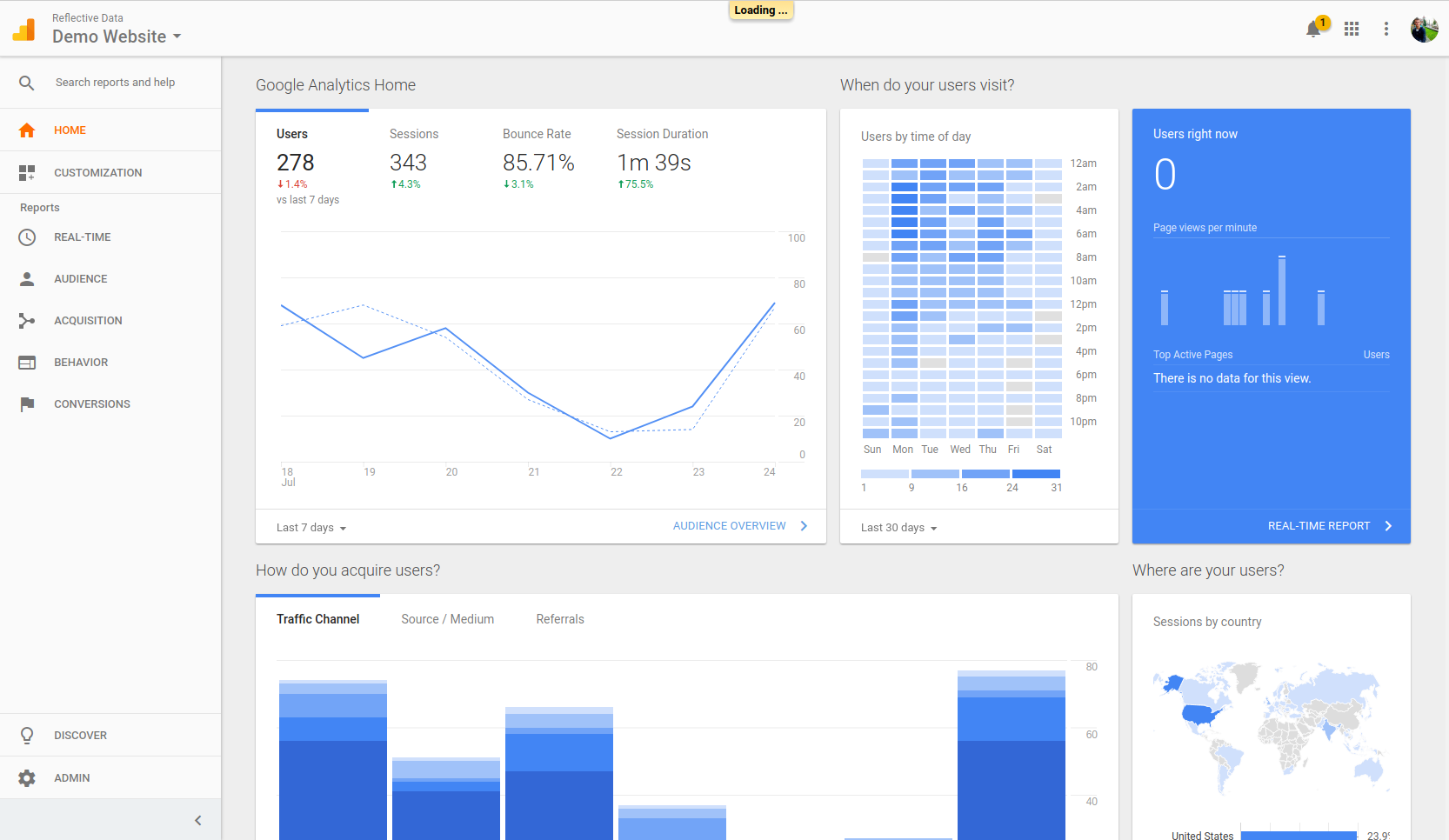A Beginner's Overview to What is a "Dimension" in Google Analytics
A Beginner's Overview to What is a "Dimension" in Google Analytics
Blog Article
Enhance Your Reporting Precision Making Use Of Google Analytics Dimensions: A Comprehensive Overview

Understanding Google Analytics Dimensions

Google Analytics supplies default dimensions, such as "web page views" and "session duration," however individuals can also create personalized dimensions to track particular data factors relevant to their service goals. In final thought, understanding Google Analytics dimensions is essential for opening important understandings that can inform calculated decision-making and enhance general efficiency.
Importance of Data Accuracy
Relocating beyond simply comprehending Google Analytics measurements, it comes to be apparent that making certain data accuracy is extremely important in obtaining meaningful insights and making educated business choices. Information accuracy creates the foundation upon which all succeeding analyses and choices depend. Inaccurate data can lead to problematic verdicts, illinformed strategies, and squandered resources. By making sure the accuracy of your data, you can confidently trust the understandings stemmed from Google Analytics measurements, allowing you to make informed decisions that drive organization development.
Data accuracy likewise fosters trust amongst stakeholders. Decision-makers are much more likely to have self-confidence in the understandings provided to them when reports are based on dependable and exact information. This trust fund is vital for constructing solid partnerships with companions, customers, and coworkers, as it demonstrates a commitment to openness and stability in your reporting techniques.
Advanced Dimension Modification
Enhancing the depth of information analysis within Google Analytics entails delving right into the world of Advanced Dimension Modification. This feature enables users to create customized dimensions to additional sector and assess information past the default dimensions offered by Google Analytics. what is a “dimension” in google analytics?. By defining details criteria that pertain to your service objectives, you can acquire much deeper understandings into user habits, project efficiency, and other essential metrics
Advanced Measurement Modification empowers individuals to customize their analytics records to concentrate on the most critical elements of their internet site or application performance. Whether it's tracking interactions with certain aspects, keeping track of the actions of different individual sectors, or evaluating the effect of custom events, personalized dimensions give a effective and flexible tool for enhancing data analysis abilities.
Executing Measurement Filters
Building upon the capacity to personalize measurements for innovative data analysis, the following action in enhancing your Google Analytics understandings involves the implementation of dimension filters. Measurement filters allow you to refine your information by consisting of or omitting details values, giving a much more concentrated view of your web site or app efficiency. By applying dimension filters, you can segment your data to examine the actions of specific user groups, track the performance of particular pages or areas, or leave out internal traffic from your reports, guaranteeing that your understandings are based upon relevant information.
To apply dimension filters in Google Analytics, browse to the Admin section, select the View where you wish to apply the filter, check that and click Filters under the View column. From there, you can develop a new filter, define the measurement you intend to filter, established the filtering system conditions, and use the filter to your data. By effectively using measurement filters, you can improve the precision and relevance of your reporting, bring about more educated decision-making and boosted overall efficiency.
Dimension Analysis Strategies
When delving right into the world of dimension evaluation in Google Analytics, understanding numerous methods is critical for removing valuable understandings. One essential strategy is segmenting dimensions to isolate certain subsets of information for in-depth evaluation. By creating sections based upon dimensions like website traffic resources or individual demographics, analysts can uncover trends and patterns that might not be noticeable when considering the data as a whole.
An additional important strategy is making use of custom-made dimensions to track added details regarding users or communications on a site. Personalized measurements enable for a much more granular evaluation of data, supplying deeper insights into customer behavior and preferences. By setting up personalized measurements for certain events or individual attributes, experts can tailor their reports to respond to details company concerns.
Additionally, the method of combining dimensions can provide a much more detailed sight of user habits. By cross-referencing measurements like web traffic sources with individual areas or devices, experts can get a far better site web understanding of how various factors influence user communications on an internet site. Overall, grasping these dimension analysis methods can significantly boost the accuracy and depth of reporting in Google Analytics.
Conclusion
In conclusion, mastering Google Analytics measurements is essential for boosting reporting accuracy and gaining valuable understandings into customer behavior. By utilizing both default and personalized dimensions, businesses can customize their analytics to reflect details objectives and metrics. Executing dimension filters enables polished evaluation, concentrating on appropriate information and omitting sound. Advanced segmentation and cross-referencing techniques grow understanding, allowing informed decision-making and method advancement based on exact, trusted details. This detailed technique ensures information integrity and boosts general coverage methods.
Measurements in Google Analytics are the characteristics of your information, such as the resource of web traffic, the gadget used, or the geographic area of the customer.Google Analytics supplies default measurements, such as "web page views" and "session period," yet individuals can also produce customized measurements to track specific information factors appropriate to their company goals.Moving beyond just understanding Google Analytics dimensions, it ends up being noticeable that making certain data accuracy is extremely important in acquiring significant understandings and making enlightened service decisions.Building upon the capability to personalize measurements for advanced data analysis, the next step in optimizing your Google Analytics insights includes the application of dimension filters. By using measurement filters, you can section your information to examine the habits of certain individual next page groups, track the performance of certain web pages or areas, or omit internal traffic from your reports, making certain that your insights are based on pertinent information.
Report this page